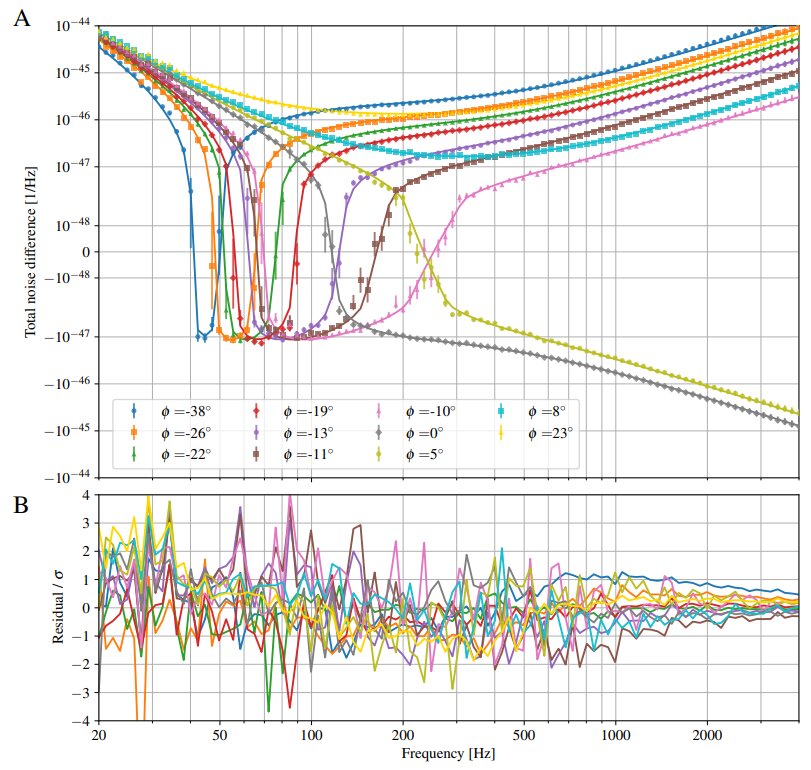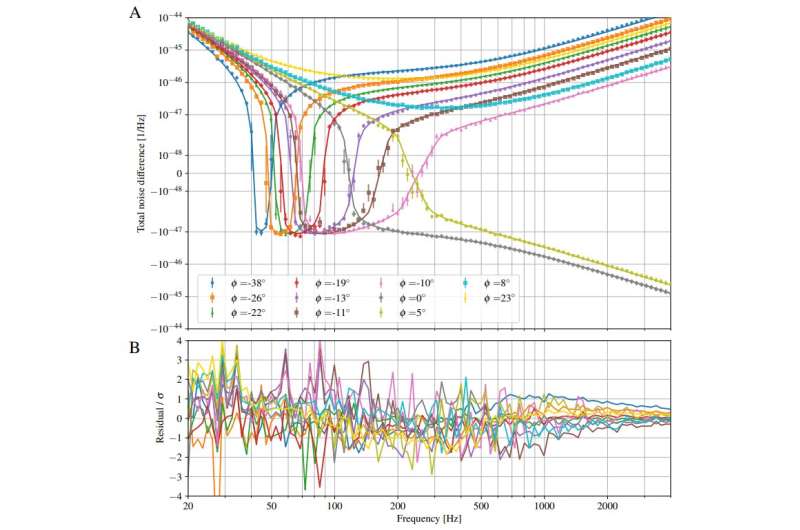

A team of researchers at the Laser Interferometer Gravitational-Wave Observatory (LIGO), in the U.S., has developed what they describe as a squeezed light system to improve detection sensitivity.
In their paper published in the journal Science, the group describes how they made changes to the observatory that reduced flicking, which resulted in increasing the number of gravitational waves they are detecting.
Yoichi Aso, with the National Astronomical Observatory of Japan, has published a Perspective piece in the same journal explaining how LIGO works and why the team working there was able to improve the observatories’ sensitivity.
In 2017, a team at Caltech, was awarded the Nobel Prize in Physics for their work that led to the development of LIGO and the eventual detection of gravitational waves in 2015. Such ripples in the fabric of space confirmed theories originally proposed by Albert Einstein. Since that time, the team at LIGO has continued to detect gravitational waves even as they have been working toward improving their detection abilities.
The LIGO observatory works by splitting a laser beam and sending the results down two long tunnels perpendicular to each other and then bouncing them back using mirrors. Differences in the beams are evidence of gravitational waves—they expand space-time in the arms holding the tunnels.
Since it was built, scientists at LIGO have known that determining the difference between gravitational waves and flickers in quantum fields can be problematic, and because of that they have been working to improve sensitivity.
In this new effort, the team added a specially crafted crystal to the detector, along with new mirrors and several lenses. In so doing, they managed to “squeeze” the light in the beams into a quantum state, which resulted in a reduction in flickering.
Initial testing showed that the improvements were only helping detect additional gravitational waves with high frequencies. That led to modifications that allowed the detection of additional gravitational waves in lower frequencies.
Together the improvements had what the team describes as a “stunning effect”—the number of gravitational waves they were detecting suddenly doubled. And that, they noted, allows them to study larger parts of the universe. They suspect the improvements will allow for new science, such as studying black holes that merged nearly all the way back to the time of the formation of the first stars.
More information:
Wenxuan Jia et al, Squeezing the quantum noise of a gravitational-wave detector below the standard quantum limit, Science (2024). DOI: 10.1126/science.ado8069
Yoichi Aso, Pushing the boundaries of gravitational wave detection, Science (2024). DOI: 10.1126/science.ads1544
© 2024 Science X Network
Citation:
LIGO team enhances gravitational wave detection with squeezed light (2024, October 14)
retrieved 14 October 2024
from https://phys.org/news/2024-10-ligo-team-gravitational.html
This document is subject to copyright. Apart from any fair dealing for the purpose of private study or research, no
part may be reproduced without the written permission. The content is provided for information purposes only.